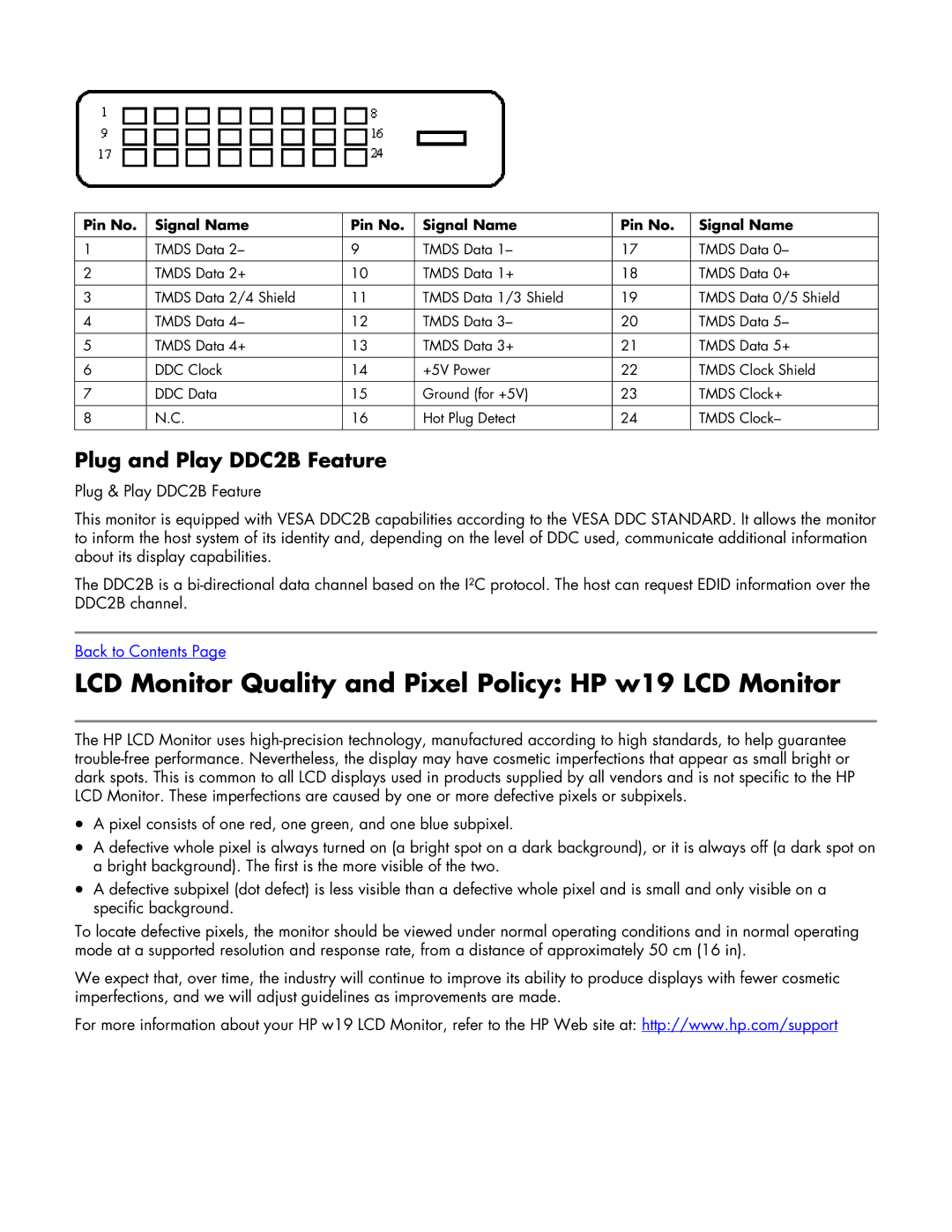
Pin No. | Signal Name | Pin No. | Signal Name | Pin No. | Signal Name |
|
|
|
|
|
|
1 | TMDS Data 2– | 9 | TMDS Data 1– | 17 | TMDS Data 0– |
|
|
|
|
|
|
2 | TMDS Data 2+ | 10 | TMDS Data 1+ | 18 | TMDS Data 0+ |
|
|
|
|
|
|
3 | TMDS Data 2/4 Shield | 11 | TMDS Data 1/3 Shield | 19 | TMDS Data 0/5 Shield |
|
|
|
|
|
|
4 | TMDS Data 4– | 12 | TMDS Data 3– | 20 | TMDS Data 5– |
|
|
|
|
|
|
5 | TMDS Data 4+ | 13 | TMDS Data 3+ | 21 | TMDS Data 5+ |
|
|
|
|
|
|
6 | DDC Clock | 14 | +5V Power | 22 | TMDS Clock Shield |
|
|
|
|
|
|
7 | DDC Data | 15 | Ground (for +5V) | 23 | TMDS Clock+ |
|
|
|
|
|
|
8 | N.C. | 16 | Hot Plug Detect | 24 | TMDS Clock– |
|
|
|
|
|
|
Plug and Play DDC2B Feature
Plug & Play DDC2B Feature
This monitor is equipped with VESA DDC2B capabilities according to the VESA DDC STANDARD. It allows the monitor to inform the host system of its identity and, depending on the level of DDC used, communicate additional information about its display capabilities.
The DDC2B is a
Back to Contents Page
LCD Monitor Quality and Pixel Policy: HP w19 LCD Monitor
The HP LCD Monitor uses
•A pixel consists of one red, one green, and one blue subpixel.
•A defective whole pixel is always turned on (a bright spot on a dark background), or it is always off (a dark spot on a bright background). The first is the more visible of the two.
•A defective subpixel (dot defect) is less visible than a defective whole pixel and is small and only visible on a specific background.
To locate defective pixels, the monitor should be viewed under normal operating conditions and in normal operating mode at a supported resolution and response rate, from a distance of approximately 50 cm (16 in).
We expect that, over time, the industry will continue to improve its ability to produce displays with fewer cosmetic imperfections, and we will adjust guidelines as improvements are made.
For more information about your HP w19 LCD Monitor, refer to the HP Web site at: http://www.hp.com/support
